QuestionHi, i bought a standard poodle form a lady who claimed she nought the poodle form a breeder and her daughter does not want the dog. The dogs name is Coco. i got her 20 days ago when she was three weeks old, day of birth is june 3rd. She is not registered but she gave me some papers to register him if i want to. i took the dog to the vet the very next day cos i did not like the way his Bm looks like. He was full of hook worms. Got some medicine and started him on heart guard treatment. He weighs 11.2 Lbs at three weeks and i could feel all the bones in his rib cage. i started feeding him with ultra nutro for puppy big breed. he now weighs 13.4 pounds 20days later. i am not sure if he is a true standard poodle because from reading other answers and questions, i think he is too small for his age. i have no experience with standard poodles and i was looking forward in getting a big dog. Is there anything i can do to make this dog catch up if he is under sized. Did the hook worms played a role with his size. he is now eatting well and i fed him a cup and a half a day. please share your ideas with me. thanks
AnswerIf he is almost 4 months old and only weighs 13.4 pounds, I doubt he will ever reach the standard Poodle size. It is possible the worms and other problems delayed his growth and he will catch up. Check the ends of the leg bones. If they are still much knobbier than an adult's, the growth plates are still open and it is still growing. If not, do not expect much more growth. There is nothing you can feed him to increase his size. Too much and too rich of a diet will only damage his joints.
You should be feeding a puppy chow now. Switching to an adult chow for the larger breeds at 4 months, slows growth and helps develop sturdier joints.
Your dog definitely should be narrower at the waist than the hips and chest. You should be able to easily feel the ribs, but not see them. Each dog is different. Standard recommendations are a good place to start, but each dog must have its food and exercise adjusted to its individual needs. Here is a link to a good illustrated guide, http://www.longliveyourdog.com/twoplus/RateYourDog.aspx

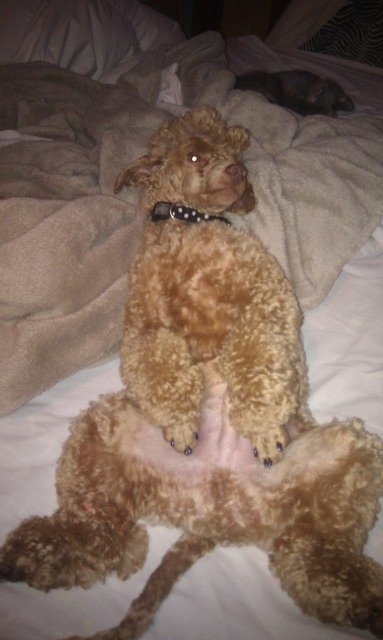 pogo poodle with seperation anxiety
Question
Banner
Hi, I have a 15 month old male d
pogo poodle with seperation anxiety
Question
Banner
Hi, I have a 15 month old male d
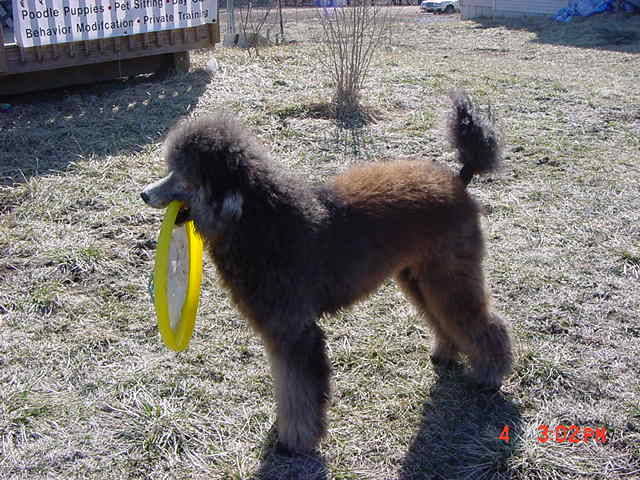 Poodle Color
QuestionHi Kim,
I recently bought a poodle puppy (she
Poodle Color
QuestionHi Kim,
I recently bought a poodle puppy (she
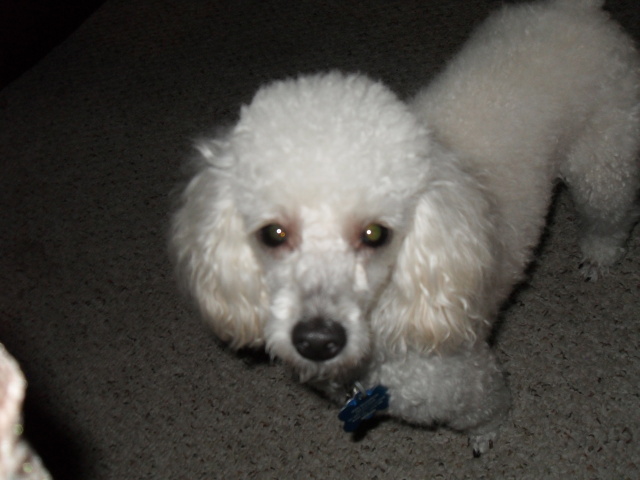 2year old male poodle want to stud
Question
Moseley
I have a white male 2year old reg toy
2year old male poodle want to stud
Question
Moseley
I have a white male 2year old reg toy
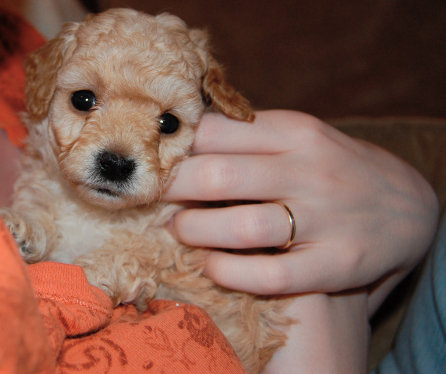 is my tiny poodle pup eating enough?
Question
oscar
We recently brought home our 8 week male
is my tiny poodle pup eating enough?
Question
oscar
We recently brought home our 8 week male
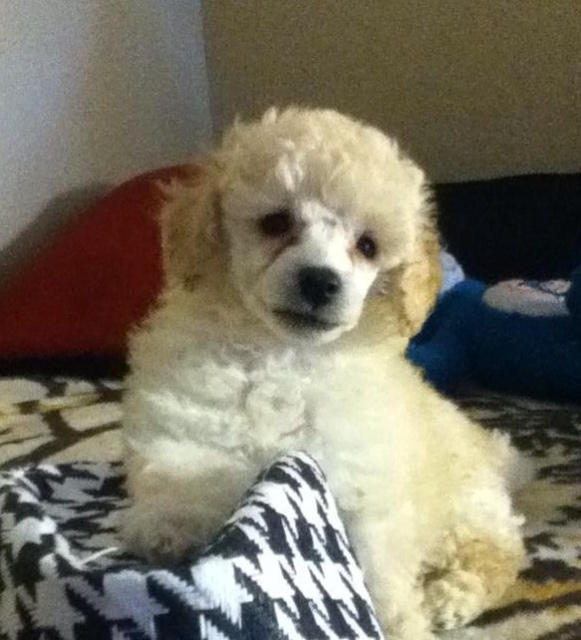 Toy poodle color
Question
CHARLIE
I bought a toy poodle puppy. &n
Toy poodle color
Question
CHARLIE
I bought a toy poodle puppy. &n